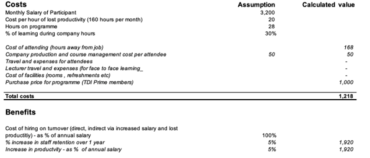Introducing the Third Wave of Peer-to-Peer Insurance
Peer-to-Peer Insurance has moved on a lot since 2010 and the Friendsurance distribution model. Whilst the insurance world waits to see what Lemonade and Besure bring to the market, Rick Huckstep looks at the emergence of the Third Wave of Peer-to-Peer Insurance; the self-governing model. Starting with Teambrella, the Russian InsurTech that uses Bitcoin to hold client money.
People-to-People Insurance
The jury may be out on the Peer-to-Peer Insurance model, but that hasn’t stopped the steady stream of new entrants who believe in fundamentally changing the dynamic between insured and insurer.
Back in December I wrote this article on P2P Insurance and featured two very different InsurTech startups in this space.
First, there was TongJuBao, a Chinese peer-to-peer insurer who provide social risk sharing insurance products. Last week, Tang Loaec, their founder/CEO sent me this announcement of a strategic partnership to distribute their products through Huaxia Finance across Greater China.
The second was Guevara, the UK motor insurer who were first to take the P2P model beyond a pure distribution play. I must give credit to Paul Andersen, Guevara’s co-founder and CEO for the term “People to People Insurance”, which is way more appropriate than peer-to-peer.
Since that article, there has been a stream of announcements from the pseudo-stealth peer-to-peer insurer, Lemonade.
First, they caught everyone’s attention with a $13m seed round (which is significantly higher than usually associated with a pre-revenue, no customer first raise.)
Then, they announced a list of high profile reinsurers lined up to back the business when it launches later this year. The latest news is the announcement that they had hired a Chief Behavioral Officer in guru Dan Ariely.
There’s much speculation about what they’re going to do when they go live, but we’ll just have to wait and see on this one.
In the meantime, I’ve been drawn to a new wave of Peer-to-Peer insurers. Some on the blockchain, some using Bitcoin and all based on a self-governing, peer-to-peer network model.
The Next Wave of Peer-to-Peer Insurance is “Self-Governing”
I see this new generation of self-governing models as the third wave of P2P Insurance. These self-governing business models move further towards a mutual insurance model than we’ve seen to-date.
To find out more, I Skyped with Alex Paperno, the co-founder of Teambrella.
Alex and his two co-founders are software engineers based in Russia and Sweden. They’ve already worked on a P2P ride-share project. Now they’re looking at insurance and applying a 21st century tech approach to a very traditional business model.
Alex explained how the platform will work; ”The concept is to form customer teams with large numbers (not just friends and families).
“Teams are self-governing user communities. A team consists of peers (teammates) that collectively manage all insurance functions, such as setting of policy rules, accepting new members, making and approving claims, reimbursements.
“Any person can create a team and define its initial set of rules. Insurance is activated once a minimal number of peers join the team (two by default) and fund their distributed wallets.
“We are pioneering a new approach to insurance and we know its limitations.”
One important thing in the Teambrella model is that they expect a lot of the teamwork to be done by insurance professionals. This is because the handling of day-to-day issues in big teams would require too much time from team members.
This opens up the potential for synergy between Teambrella and insurance agencies or individual professionals. Professional insurers could be involved in the voting for risks assessments and/or reimbursements.
For their efforts, they would be compensated for their work and expertise. And the more people entrust them with their votes, the more they will be paid.
Premium-less Insurance
The key difference with other insurance models is that the customer does not hand over a premium.
Instead, once a “premium” has been set by the team, the team member puts that “premium” into their digital wallet.
This is in effect an escrow account and this is where the “premium” stays. It remains in the digital wallet to be called upon if anyone else in the team makes a claim that is approved by the team members.
If no claims are made, then everyone in the group still has their money in their digital wallet. And when claims are made, the platform uses Bitcoin to move money around the network, avoiding friction and cost.
Aaron van Wirdum recently wrote an excellent article for Bitcoin Magazine on how Teambrella works, which can be found here.
In this model, nobody carries an exposure greater than the amount they put into the digital wallet. Which means that this model works for insurance that carries a limited exposure. It would work for collision damage on a motor policy, but not personal injury liability. This would still need wholesale reinsurance at the back end.
Peers only pay when a claim is made
This gets to the heart of the Teambrella business proposition.
Which means that it is important for the model to work that every team member is consistently risk adjusted to create a level playing field in the team. In my mind, this works like the handicap system in golf. It means golfers of different levels of ability can all compete evenly against each other.
The same concept applies here in the form of risk premiums.
The default is that everyone in the same team starts with the same risk rating.But, if one team member is a bad driver and everyone knows it, then that person gets a higher risk rating and they either have to put more capital into the wallet or they get less if they make a claim.
Alex explains the mechanics of how this will work in a white paper that you can find here.
The point of this is to “normalize” the risk coverage within a team and ensure “equality”. How “equality” and “normalize” are defined is up to each team to work out, not Teambrella.
That is true peer-to-peer insurance in action.
Fraud and moral hazard
“It’s a big social experiment”, was how Alex responded when I asked him about fraud.
“We can’t reduce it to zero, but it will be lower because of the way each team member’s action impacts on the team.”
Which is a common theme for all the Peer-to-Peer insurers, regardless of their business model. They are all challenging the conflict dynamic between policyholders and insurer, where neither party trusts the other.
As a fraud prevention measure, the network of each team will be built through social referrals via Facebook accounts. Which is the way to avoid getting a network of fictious accounts all talking to each via robot chat.
“Teambrella is more than just a friends and family network. It is built on a network of referrals via social media. This allows us to grow large networks.
“The point is that we believe in human behavior and that people can cooperate if their interests are aligned on a platform without insurer’s profit, overheads, or admin costs.
“Some sharing economy is build on trust, but we think that alignment of interests is a stronger building block than trust.”
This is a key point that distinguishes Teambrella from other Peer-to-Peer insurers.
And we’ll be able to see for ourselves when the alpha version of Teambrella goes out on the Bitcoin blockchain Testnet for trial users this summer.
And I for one will be watching with great interest as Alex and his co-founders bring their self-governing, peer-to-peer insurance model to market!
The author, Rick Huckstep, is an InsurTech thought leader and editor of InsurTech Weekly for The Digital Insurer.



























































Comments